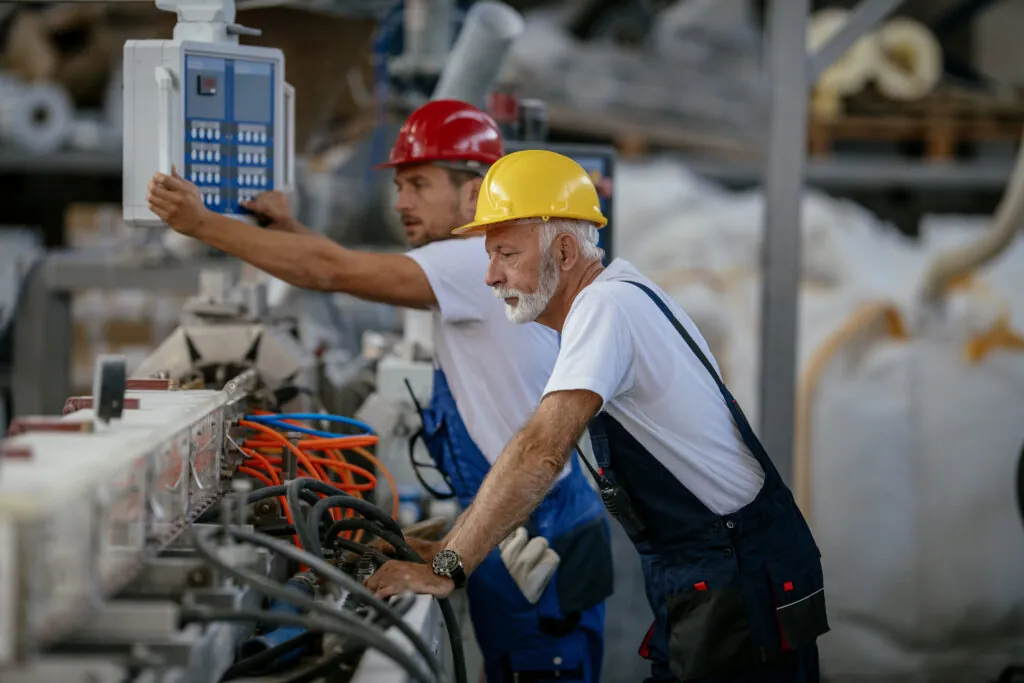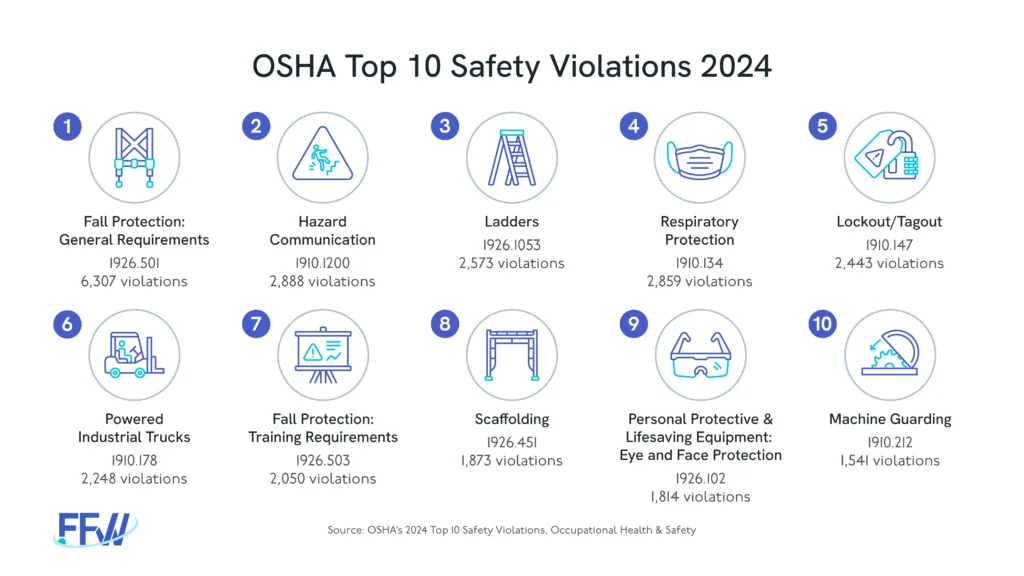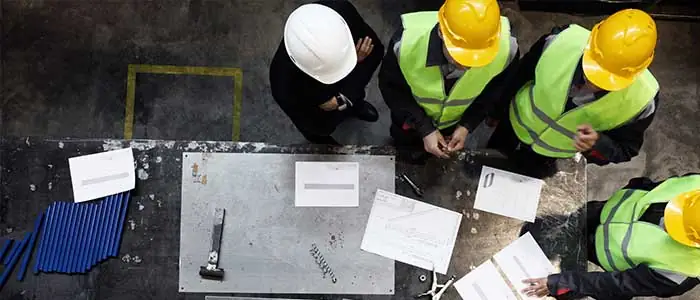By Joe Blauser MS ATC, LAT, CEAS II
Area Manager, Fit For Work
Did you know that before the concept of ‘retirement’ was introduced in 1883, people simply worked until they could no longer do the job?
Since then, retirement mandates, pensions, Social Security, IRAs, and AARP have reshaped our perceptions of aging. Today, many organizations are focusing on retaining their most experienced workers, recognizing the value of older employees not just during observances like National Older Workers Employment Week, traditionally celebrated in March, but year-round.
A client had 10 maintenance employees nearing retirement, collectively bringing 350 years of expertise—an invaluable resource at risk. The solution? Retaining seasoned workers to mentor new hires can be key to successfully managing this transition.
As the workforce ages, supporting older employees becomes essential for maintaining both productivity and well-being. In this blog, we’ll explore the physical effects of aging and share strategies to prevent injuries or minimize their impact, ensuring experienced employees can continue to thrive. Aging is a natural process, and by understanding these changes, we can help individuals stay healthy and continue contributing at their best.
Physical Effects of Aging
Decreased Strength and Endurance – Sarcopenia is the natural decline in muscular strength as people age, with muscle mass decreasing in the 30s and accelerating after age 60. This condition results in a decrease in the size of muscles and the number of muscle fibers. It’s like a phone battery that loses its ability to hold a charge over time; the energy reserve isn’t as strong, and it depletes more quickly. There is less energy stored in muscles, less efficiency in oxygen usage, less ability to generate force, and therefore, reduced physical capability. Today’s lift devices, carts, and cranes become vital, along with training workers to “test” the load before lifting and seek help when needed.
Muscle recovery is also impacted by aging, with workers needing additional time to recuperate from physical exertion. The body’s repair mechanism is less efficient, leading to an increased risk of fatigue or injury, with a potentially reduced capacity to perform certain tasks. You may notice an older worker exhibiting more soreness by lunchtime or struggling to meet production requirements in a highly repetitive assembly job. Frequent microbreaks become essential, along with rotating workers to reduce job fatigue and applying ergonomics that adapt tasks to workers’ needs.
Reduced Flexibility and Joint Mobility – We see a decreased range of motion and joint mobility in older employees, along with reduced flexibility. This issue can make construction, manufacturing, and warehousing positions more difficult, increasing the risk of on-the-job injury. Imagine an older road construction worker, standing for 12 hours a day on the back of an asphalt paver, stepping on and off several hundred times per shift. In these scenarios, reduced flexibility and mobility can definitely take a toll.
Unfortunately, as people age and feel their limitations, they tend to become less active after work. They may choose sitting on the couch to recover instead of taking a bike ride or a hike. Older workers need encouragement to combat the inactivity that causes muscles, ligaments, and tendons to lose further elasticity and joints to become less mobile.
Physical conditions can exacerbate flexibility and mobility issues as cartilage thins and joints have less lubrication. The risk of arthritis, tendonitis, and bursitis increases with age, affecting the knees, elbows, back, shoulders, and extremities. We also see an increase in spinal issues, such as bulging or herniated discs in the cervical or lumbar spine, for most people over 50. Pressure on the nerve root or spinal cord can decrease sensation and muscle control.
Supervisors should be aware that employees may take medications for cardiovascular disease, high or low blood pressure, diabetes, or COPD that can affect strength, endurance, and performance. These conditions may impact older workers’ performance of tasks that require bending, reaching, lifting, and repetitive motion.
Creating an environment where both employers and employees feel comfortable discussing potential health concerns—while ensuring privacy is respected—is essential for maintaining a supportive workplace.
Slower Reaction Time – As workers age, they may be slower to react due to slower neural communication and even decreased brain volume. These neurological changes can impact cognitive abilities such as memory, processing speed, attention span, and multitasking. We often see issues with vision and hearing, plus possible nerve damage from past injuries.
This culminates in a slower response time and a need for vigilance while avoiding distractions. Consider a 60-year-old construction worker operating heavy machinery such as a cement truck; braking might take a split second longer if an unexpected obstacle appears in the area. Workers need encouragement from management to stay vigilant and avoid distractions.
The Good News
While the physical effects of aging are inevitable, the experience that mature workers bring to the table is invaluable. Older employees often have a deep understanding of the job’s demands and the risks associated with it. They know how to navigate challenges and work smarter, not just harder. With the right support, such as ergonomics, microbreaks, and encouragement to stay active, these workers can continue to perform at their best while minimizing strain and fatigue.
Health and Performance Strategies for Aging Workers
Strength Training – Using free weights, exercise bands, or even body weight is a great way to strength train—15-20 minutes is enough. We recommend squats or lunges, holding hand weights or even a gallon of paint, if that’s what’s available. Doing pushups or planks on a stairway or against a counter offers an incline challenge. Consider a warehouse worker lifting boxes all day, primarily using their upper body; they need to balance this with core exercises like planks and lower-body exercises such as squats. Similarly, an asphalt worker who walks all day, engaging their lower body, must maintain upper body strength to effectively wield a shovel, using their biceps and triceps. An ideal goal is cardiovascular exercise, such as walking or biking, for 20 minutes daily, then layering in mild strength training three times per week with recovery between workouts.
Proper Nutrition and Rest – Today’s MyPlate model encourages balancing fruits, vegetables, grains, and vital proteins. As aging workers lose muscle, eating more protein helps replace muscle mass and ensure adequate intake of essential amino acids. We also recommend swapping processed foods with whole foods, avoiding dyes and additives, and being mindful of food product sources. Planning and packing a healthy lunch with water to hydrate is better than buying fast foods, sugary drinks, or sweet/salty snacks.
Next, rest is imperative, allowing recovery from stress and injury. We recommend at least seven hours of quality sleep between shifts to repair the body and mind. Sleep is challenging for many older employees, especially for second/third-shift workers. There are several kinds of rest, with both being essential. Passive rest or repair means lying down or sleeping; active rest or repair includes gentle motion without joint stress to oxygenate and support blood flow.
A good example is coming home, sitting down for 20 minutes, eating a healthy meal, and then walking or gardening for 15-20 minutes. Including a friend or family member supports social connections, and gentle exercise several hours before bed encourages sleep.
Flexibility and Stretching – We recommend stretching three times per day. First, upon waking with a minor stretch of the hamstrings, quads, calf muscles, then upper chest, shoulders, and back to encourage blood flow and oxygenation. Second, before work or during a break, stretching for five minutes to loosen muscles. Third, after work, stretching the calves, hamstrings, back, and shoulders to release tension and increase alertness for the drive home. Before-bed stretches, such as gentle yoga poses, aid relaxation and sleep, supporting muscle recovery while increasing flexibility.
Identifying Underlying Conditions – Mature workers often need encouragement to schedule their annual physical exam for preventive care, including tracking blood pressure, blood sugar levels, and bone density. Musculoskeletal pain, pulmonary and heart function, mental health, plus vision and hearing issues can affect daily function and job performance; they should be identified and treated as needed.
Keep in mind that an employee starting new medications may go through an adjustment period, perhaps being affected by the hot sun or needing hydration breaks. Awareness of underlying medical conditions or medication side effects (while following HIPAA) can protect older workers and keep them safe on the job longer.
Cognitive Training, Mindfulness, and Meditation – Cognitive training helps employees stay mentally sharp. In fact, higher occupational work complexity leads to better cognition throughout life, and people with complex jobs have a lower risk of dementia. Mindfulness means being aware of surroundings and keeping the mind on task to ensure job performance, quality, and safety.
Meditation can include intentional concentration to calm and focus the mind. Techniques such as visualization help mentally rehearse steps in a complicated task to complete the job successfully. You can observe this in athletes, who often close their eyes, mentally go through their routines, and visualize achieving success.
Conclusion
When organizations work to keep experienced, mature employees on the job, they demonstrate respect and care for their people. Investing in your workforce increases their overall health, confidence, and performance—plus job satisfaction and retention.
Mature employees often share that if they had access to these health benefits earlier in their careers, they would have stayed healthier and more mobile, avoiding many long-term injuries.
The return on investment (ROI) is clear: a more engaged, dedicated, and productive workforce, fewer workers’ compensation claims, reduced turnover, and less need for costly replacements and onboarding. Stronger working relationships between employers and employees also result in a better work experience for all and an improved quality of life.
Additional Resources:
Download our infographic to explore the benefits and challenges of an aging workforce, along with actionable solutions to keep them protected.
For a deeper understanding of the legal framework surrounding age discrimination—and how to protect your aging workforce—we recommend reading our partner WorkSTEPS’ companion blog, Navigating Age Discrimination and Testing: How to Support Aging Workers Legally and Effectively.
Ready to learn more? Contact us today to discover how Fit For Work’s comprehensive safety program can help you foster long, productive careers for your aging employees.

Joe Blauser is an Area Manager in the East Region for Fit For Work. With over 30 years of experience as a Certified Athletic Trainer, Joe has spent the last 18 years working in industrial settings. His diverse background includes experience in manufacturing, construction, chemical facilities, and mining operations. In his free time, Joe enjoys exploring the outdoors, particularly hiking new and interesting locations.





